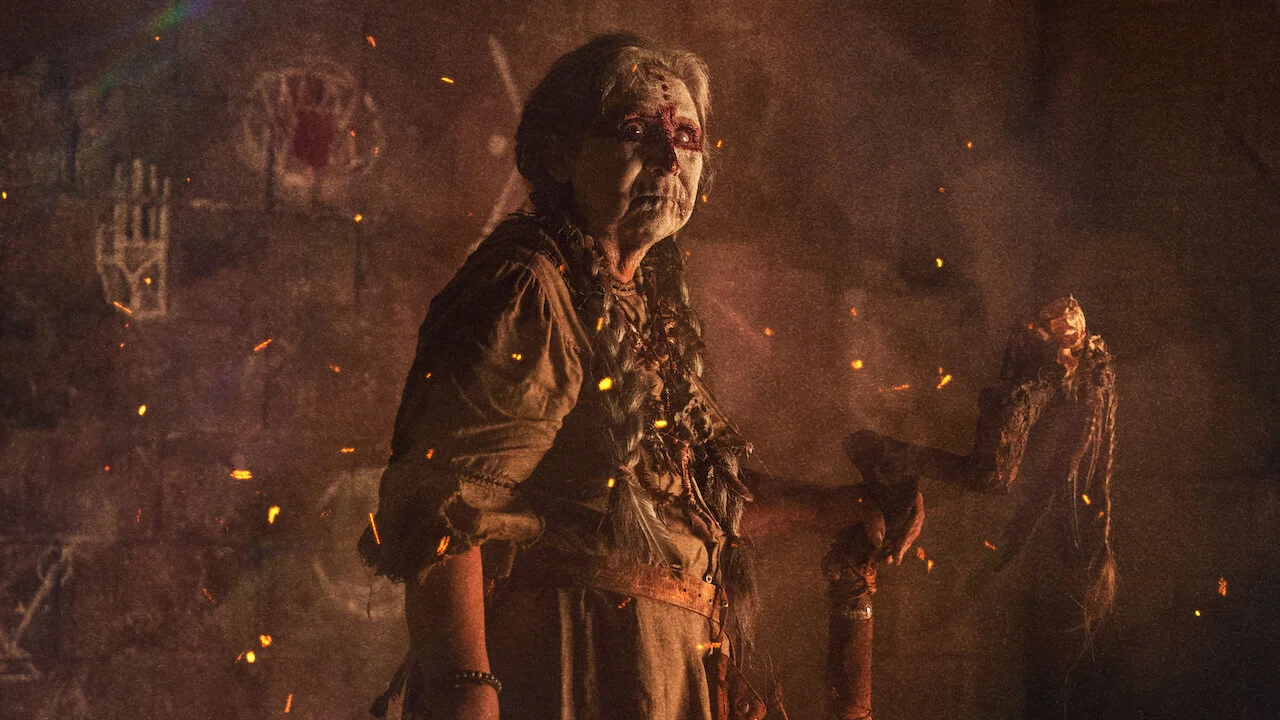Halloween Horror: The Masque of the Red Death (1964)
Roger Corman’s The Masque of the Red Death is more effective as a late-night Gothic thriller than as an adaptation of Edgar Allan Poe’s famous short story of the same name. In both the story and the movie, Prince Prospero (played on screen by the incomparable Vincent Price) has barricaded himself in his castle with his chosen lords and ladies against the Red Death, a terrible plague that ravages the countryside. Although Corman is faithful to the main elements of the Poe story, he introduces additional characters, storylines, and points of interest, such as Prospero’s Satanism. Unlike the story, much of the film is centred on the imprisonment in the castle of a peasant girl, Francesca (Jane Asher), along with her father, Ludovico (Nigel Green), and lover, Gino (David Weston). While these additions are necessary for expanding the very brief story into a feature-length narrative, they also significantly transform the themes and dynamics of the story.
Poe’s “The Masque of the Red Death,” which achieved renewed attention in the Covid era, is a strange and evocative story. It has little narrative development and spends its time instead on establishing its premise and then describing, in elaborate fashion, the rooms and costumes at the party Prospero is hosting. The themes of the story are human hubris and folly in the face of the inevitability of pestilence and mortality. Poe communicates a generalized criticism of those holding power and wealth who think they are immune to the matters of disease and death.
The screenplay, by Charles Beaumont and R. Wright Campbell, makes Prospero not just a tyrannical ruler but also a Satanist, which redirects the social critique. No longer a stand-in for ruling elites generally, the Prince is rather an embodiment of the worst kind.
Vincent Price, that luminary of Roger Corman and other late-night movies, plays Prince Prospero with his trademark mannerisms. You never quite know if you believe Price’s performance, but his archness is fascinating to watch, with his mocking smiles and frowns. At times, Price’s line delivery is utterly bizarre, such as the way he barely makes audible a line about “the devil,” yet mouths the words so vividly.
The campy pleasures of Price’s performance, the decadent costumes, and faux-medieval setting shouldn’t lead us to assume The Masque of the Red Death is without thematic substance or intellectual interest, however.
Rather, The Masque of the Red Death is marked by an intense fascination with looking, or more precisely, leering. The actual sex, nudity, and violence on screen are pretty limited by today’s standards, but characters are always gazing at things or each other in what I can only describe as the wrong way. Prospero and his guests are continually taking pleasure in what they shouldn’t: whether being entranced by the tiny dancer, with all the pedophilic suggestions of the scene, or laughing at people being forced to make jackasses of themselves, or watching a man in a giant ape costume being beaten and burnt alive.
The other notable gaze in the film is that of the victim—the look of fear—such as what we see on Francesca’s face during her many wanderings about the castle and its dungeons.
In The Masque of the Red Death, the camera emphasizes characters gazing as well as their reactions to what they look at. Both the objects being viewed as well as the manner of looking are unpleasant, even disturbing. As viewers, we become uncomfortable, as if we are seeing a mirror of our own possible leering at the screen.
One of the achievements of Corman’s Masque of the Red Death is its conscious engagement with a common motif in film: the gaze. In the movie, perversion of sight, meaning the distortion of the intended point of looking for pleasure, suggests the film itself is an opportunity for voyeurism and leering. By extension, the film implicates the audience of such late-night gratuity as it locates and calls attention to the audience within the film. We are a part of Prospero’s party, among the depraved who laugh and drink and snort at the depictions on screen. So, The Masque of the Red Death is actually doing interesting things, in addition to being a decently satisfying late-night Gothic story.
That said, Corman’s Masque of the Red Death is not my ideal adaptation of Poe’s short story, as it lacks interest in the Red Death as a disease and the actual human experience of plague. In the story, the plague outside sets the necessary conditions for the debauchery of the few who are self-isolating. The plague is no longer the centre piece in the movie, seeming almost tangential to its interests. Prospero lets the girl and her father and lover in, in spite of the plague, and never locks the castle’s inhabitants inside the castle. In general, in the film, the Red Death is more of a supernatural force than an actual infectious disease.
We need an updated adaptation of Poe’s brilliant story for the post-Covid era. In the meantime, put this on for a small viewing party in late October, and have a good conversation afterwards about why we watch these kinds of lurid movies.
7 out of 10
The Masque of the Red Death (1964, UK/USA)
Directed by Roger Corman; screenplay by Charles Beaumont and R. Wright Campbell, based on the short story by Edgar Allan Poe; starring Vincent Price, Hazel Court, Jane Asher, David Weston, and Nigel Green.



Kiyoshi Kurosawa’s horror drama is a quiet film with a haunting effect that’s as disturbing as anything you’ll find in horror cinema.